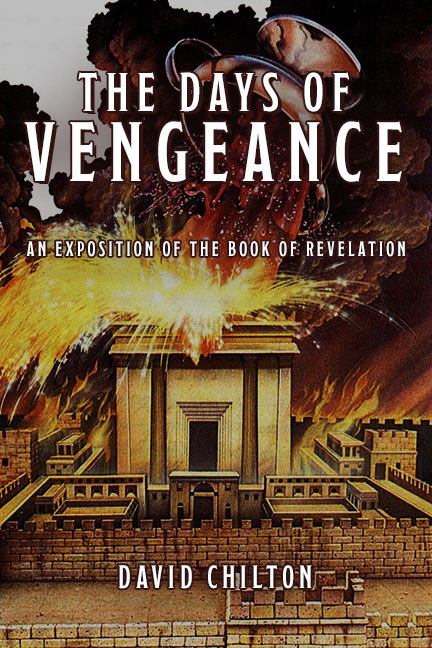
Chapter 13: Leviathan and Behemoth
David Chilton
Narrated By: Daniel Sorenson
Book: The Days of Vengeance: An Exposition of The Book of Revelation
Topics: Eschatology
Subscribe to the Audiobook
iTunes Google Spotify RSS FeedChapter Text
The Book of Revelation is a Covenant document. It is a prophecy, like the prophecies of the Old Testament. This means that it is not concerned with making “predictions” of astonishing events as such. As prophecy, its focus is redemptive and ethical. Its concern is with the Covenant. The Bible is God’s revelation about His Covenant with His people. It was written to show what God has done to save His people and glorify Himself through them.
Therefore, when God speaks of the Roman Empire in the Book of Revelation, His purpose is not to tell us titillating bits of gossip about life at Nero’s court. He speaks of Rome only in relation to the Covenant and the history of redemption. “We should keep in mind that in all this prophetic symbolism we have before us the Roman empire as a persecuting power. This Apocalypse is not concerned with the history of Rome…. The Beast is not a symbol of Rome, but of the great Roman world-power, conceived as the organ of the old serpent, the Devil, to persecute the scattered saints of God.”[1] The most important fact about Rome, from the viewpoint of Revelation, is not that it is a powerful state, but that it is Beast, in opposition to the God of the Covenant; the issue is not essentially political but religious (cf. comments on 11:7). The Roman Empire is not seen in terms of itself, but solely in terms of 1) the Land (Israel), and 2) the Church.
The Beast from the Sea (13:1-10)
- And I was stationed on the sand of the sea. And I saw a Beast coming up out of the sea, having ten horns and seven heads, and on his horns were ten diadems, and on his heads were blasphemous names.
- And the Beast which I saw was like a leopard, and his feet were like those of a bear, and his mouth like the mouth of a lion. And the Dragon gave him his power and his throne and his great authority.
- And I saw one of his heads as if it had been smitten to death, and his fatal wound was healed. And the whole Land wondered after the Beast;
- and they worshiped the Dragon, because he gave his authority to the Beast; and they worshiped the Beast, saying: Who is like the Beast, and who is able to wage war with him?
- And there was given to him a mouth speaking great things and blasphemies; and authority to make war for forty-two months was given to him.
- And he opened his mouth in blasphemies against God, to blaspheme His Name and His Tabernacle, those who tabernacle in heaven.
- And it was given to him to make war with the saints and to overcome them; and authority over every tribe and people and tongue and nation was given to him.
- And all who dwell on the Land will worship him, everyone whose name has not been written from the foundation of the world in the Book of Life of the Lamb who has been slain.
- If anyone has an ear, let him hear.
- If anyone is destined for captivity, to captivity he goes; if anyone kills with the sword, with the sword he must be killed. Here is the perseverance and the faith of the saints.
1-2 St. John tells us that, just as he had ascended to God’s Throneroom in order to behold the heavenly world (4:1; cf. Ezek. 3:14; 8:3), the Spirit now stationed him on the sand of the sea, the vantage point from which he is able to view the Beast coming up out of the sea. In a visual, dramatic sense, the mighty Roman Empire did seem to arise out of the sea, from the Italian peninsula across the ocean from the Land. More than this, however, the Biblical symbolism of the sea is in view here. The sea is, as we saw in 9:1-3, associated with the Abyss, the abode of the demons, who were imprisoned there after having been expelled from the Garden. The Abyss is the “Deep” of Genesis 1:2, “without form and void,” uninhabitable by man. It is away from the dry land of human environment, and is the place where the demons are kept imprisoned as long as men are faithful to God. When men apostatize, the demons are released; as man is progressively restored, the evil spirits are sent back into the Abyss (Luke 8:26-33). Here we see the ultimate source of the “beastliness” of the Beast: In essence, he comes from the sea, from the chaotic deep-and-darkness of the Abyss, which had to be conquered, formed, and filled by the light of the Spirit (Gen. 1:2; John 1:5). This is not to suggest that there was any real conflict between God
